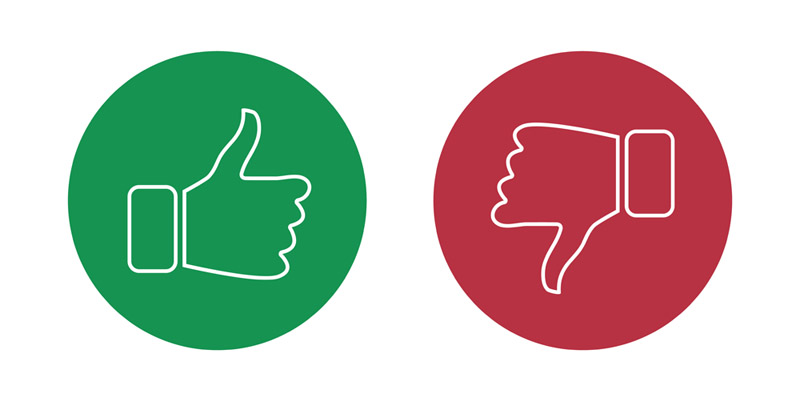
We have just devoted two very detailed articles to B2C market research (see here) and B2B market research (see here). Aware that all the information will probably be confusing to assimilate all at once, we have prepared a concise overview table that presents the methodological differences between these two types of market research.
[call-to-action-read id=”35105″]
This table shows two kinds of information:
- You will, first of all, find the 3 main methods to use for the study of the two contexts. These methods are listed in the order in which they should ideally be used (methods 1, 2, 3)
- Some advice on what to do and what to avoid in each of the 2 contexts
We hope that this presentation will be useful to you and we encourage you to leave your comments and share this article so that it can be of service to as many people as possible.
Differences between B2C and B2B market research methods
| Method | B2C Market research | B2B Market research |
| Method n°1 |
Environmental study (PESTEL study)In the context of a prospective study (new market, new product/service) you must pay particular attention to the analysis of legal constraints (the “L” of PESTEL). Legal risks that you may take due to ignorance or inadvertence can have significant (and retroactive) consequences that may be potentially lethal to your business. Study the applicable regulations, standards and laws carefully, especially if your market research concerns a territory you do not yet know. For specific questions, call on specialists. First contact the Commercial Advisors of economic development agencies, the legal advisors of the structures supporting entrepreneurship in your respective country, to clear the ground. Finally, contact a lawyer to resolve any remaining doubts. |
Study of the CompetitionIn a B2B context, it is particularly important because you are likely to compete with large companies whose commercial resources will make it possible to cover vast territories and therefore have an impact on a large catchment area. Use a grid to establish your benchmark and identify the strengths and weaknesses of your competitors. Finally, use an evaluation method such as the 5 Forces framework by Porter to make a more systematic assessment of the competitive forces at work in the market. Such an analysis will provide you with information on the difficulties to anticipate in entering a specific market and in particular on the potential resistance to be expected from your competitors. Watch our course on the subject to familiarise yourself with this tool. |
| Method n°2 |
Qualitative research: face-to-face interviews and/or focus groupsIn a B2C market, the purchase decision is usually made by a single person (the final consumer). It is essential to understand the needs of your future customers, their frustrations with other competing products or services, to adapt yourself as effectively as possible to their expectations. Face-to-face interviews, which allow us to get to the bottom of things, are suitable for prospective market research (new product/service, innovation, new territory). Focus groups are recommended when you already have a product (in the form of a prototype for example) or a precise description of services to stimulate discussion between participants. We do not recommend using focus groups when it comes to generating new ideas or innovating (there are other methods for this, such as Design Thinking). |
Qualitative study: interviews with experts and potential clientsThis method is based on so-called qualitative research techniques because it is during individual interviews that you will collect the information. The samples you will be interviewing will, therefore, be relatively small and will aim to identify your competitors, understand market dynamics, and understand the decision-making processes within companies. In B2B, the purchasing decision is often made by several different shareholders, which means that you must follow their specific needs and adapt your marketing strategy accordingly. Some entrepreneurs will object that they are entirely familiar with the market and can do without expert advice or contacts with the customers of their future competitors. This underestimates the effect of the knowledge corridor, a syndrome that affects those who have worked for a long time in a given sector and which provides them with a distorted view of the market. |
| Method n°3 |
Quantitative study: an online surveyOf course, no proper market research can do without quantitative research. We advise you to carry out an online survey as part of B2C market research. Many tools (most of which offer free features) are available. They are also well suited for online panels. This is our second tip to help you avoid the bias associated with convenience samples. You will find on our website a multitude of tips to help you write your online survey and formulate your questions correctly. |
Analysis of the environmentStudy the exogenous factors (what is not under your control) of your market, focusing in particular on the upcoming changes (legal, social, and so on) that could affect the dynamics of the market. These exogenous factors influencing the market are all interesting levers to differentiate yourself and gain a share of the market. Environmental analysis is also called PESTEL analysis for Politics – Economics – Sociology – Technology – Economics – Legal. This framework offers you a way to systematically study all the forces beyond your control that can change the dynamics of a market. |

DO’S and DON’TS: Advice for your market research
| B2C Market research | B2B Market research | |
| DO’S |
|
|
| DON’TS |
|
|
Images : shutterstock
Posted in Marketing.

